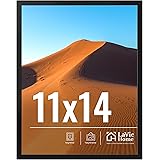Ever found yourself wishing your smartphone could do just a little bit more, or perhaps that a broken accessory didn’t mean a costly replacement? The convenience of a smartphone is undeniable, but there are always opportunities to enhance its functionality or salvage favorite components with a bit of ingenuity. The video above presents three ingenious DIY smartphone gadget ideas, showcasing how common household items and basic electronics can be repurposed into incredibly useful tools. This article delves deeper into each of these projects, providing additional context, tips, and considerations to help you master these practical builds.
Crafting a DIY Micro USB LED Flashlight
The standard LED flash on modern smartphones is convenient for quick photos, but it is not typically designed for prolonged use as a general flashlight. Overheating can be a significant concern, potentially damaging the phone’s internal components or reducing the lifespan of the flash module. This is where a dedicated, external micro USB LED flashlight can be invaluable. It ensures that your phone’s critical functions are not overstressed, offering a reliable light source that runs until the external battery is depleted, rather than risking phone damage.
Essential Components and Their Roles
For this practical DIY smartphone gadget, only a few components are needed. A micro USB plug serves as the power source connector, linking directly to your smartphone’s charging port. A white diode, specifically an LED (Light Emitting Diode), provides the illumination. To protect the LED from excessive current, a 100-ohm resistor is incorporated into the circuit. This resistor is crucial; without it, the LED could burn out almost instantly due to the unregulated voltage from the phone’s USB port.
Assembly Steps for Your Custom Light Source
1. The micro USB plug is first carefully disassembled to access its internal contacts. It is worth noting the distinction between micro and mini USB plugs; they differ not only in size but also in their pin configurations. While many micro USB plugs feature four contacts, some may have five. If a five-contact plug is encountered, a pinout diagram is easily found online and should be consulted to correctly identify the positive and negative terminals, ensuring proper connection.
2. The 100-ohm resistor is then soldered to the positive terminal of the micro USB plug. Its role is to limit the current flowing to the LED, preventing damage. Subsequently, the anode (positive leg) of the LED is soldered to the other end of the resistor. The cathode (negative leg) of the LED is then connected to the negative terminal of the micro USB plug. Correct polarity is critical for the LED to function.
3. Finally, the LED is carefully whittled down or shaped to fit snugly within the reassembled plug case. This creates a compact, robust flashlight that draws power directly from your smartphone, providing a safe and efficient alternative to using the built-in flash.
Building a DIY USB On-The-Go (OTG) Adapter
USB On-The-Go (OTG) is a specification that allows USB devices, such as smartphones or tablets, to act as a host, enabling them to read data from a USB flash drive, external hard drive, mouse, or keyboard. This functionality significantly expands the utility of your mobile device, transforming it into a more versatile workstation on the go. While commercially available OTG adapters are common, crafting your own DIY smartphone gadget offers a unique sense of accomplishment and a personalized solution.
Required Materials for the Adapter
To construct this handy adapter, a micro USB plug and a standard large USB plug are needed. These components can often be salvaged from old, unused cables or purchased inexpensively. The idea is to create a direct connection between the data lines of the micro USB and the standard USB, allowing the smartphone to communicate with external USB devices.
The Custom Adapter Assembly Process
1. The case of the micro USB plug is taken apart, and any excess wires from the standard USB plug are trimmed, leaving only short, manageable pieces for soldering. Identification of the correct wires is paramount for the adapter to function correctly. Typically, in USB wiring, red is positive (+5V), black is negative (Ground), green is data positive (D+), and white is data negative (D-). In some cases, a blue or yellow wire might be present for data. Careful attention to matching these data lines and power lines between the micro USB and standard USB is required.
2. The corresponding wires are then carefully soldered together. The red wire of the large USB plug is connected to the +5V pin of the micro USB, and the black wire is connected to the ground pin. The green (D+) and white (D-) wires from the large USB are connected to their respective data pins on the micro USB. After successful soldering, the connections are meticulously secured within a customized case, ensuring durability and preventing short circuits.
3. Before relying on your new DIY adapter, it is crucial to verify if your smartphone is compatible with the OTG feature. Not all devices support it, though most modern Android smartphones do. A quick search for “OTG compatibility [your phone model]” should provide the necessary information. With this custom OTG adapter, documents stored on a memory stick can be instantly viewed on your smartphone, even if a laptop or tablet is not at hand. This is particularly useful for work or school when urgent file access is required.
Innovative Earphone Repair with a Syringe Adapter
Broken earphone cables are a common frustration, often leading to discarded, otherwise functional headphones. The cable typically breaks at the input plug, where constant bending and pulling cause strain. This project offers a creative and cost-effective solution to repair beloved earphones by replacing the damaged plug casing with a unique needle adapter, extending the life of your audio accessories.
Components for Earphone Restoration
The primary component for this repair is a needle adapter, ingeniously repurposed from a syringe. This provides a durable and compact casing for the delicate earphone wire connections. The broken earphone set itself provides the essential wires and drivers that are still functional.
Steps for a Durable Earphone Fix
1. The repair begins by carefully removing the needle from the syringe adapter, ensuring that only the plastic casing remains. A hole of the same diameter as the earphone cable is then precisely drilled into the adapter’s end. This ensures a snug fit for the cable and protects the internal connections from future stress.
2. The earphone wires, which have typically been torn out of the original input plug, are then carefully prepared. The individual wire strands, usually insulated with enamel, must be stripped or burned clean to expose the conductive copper. These prepared wires are then meticulously soldered to the input plug’s terminals. Standard earphone plugs have three segments: tip, ring, and sleeve (TRS) for stereo audio and sometimes a fourth for a microphone. Correctly matching the left audio, right audio, and ground wires is essential for proper sound.
3. Once the soldering is complete and tested, the syringe adapter case is carefully slid over the newly soldered connections and the input plug. This acts as a robust strain relief and a protective housing, giving your repaired earphones a distinctive and resilient new lease on life. This DIY smartphone gadget solution not only saves money but also promotes a more sustainable approach to consumer electronics by encouraging repair over replacement.











